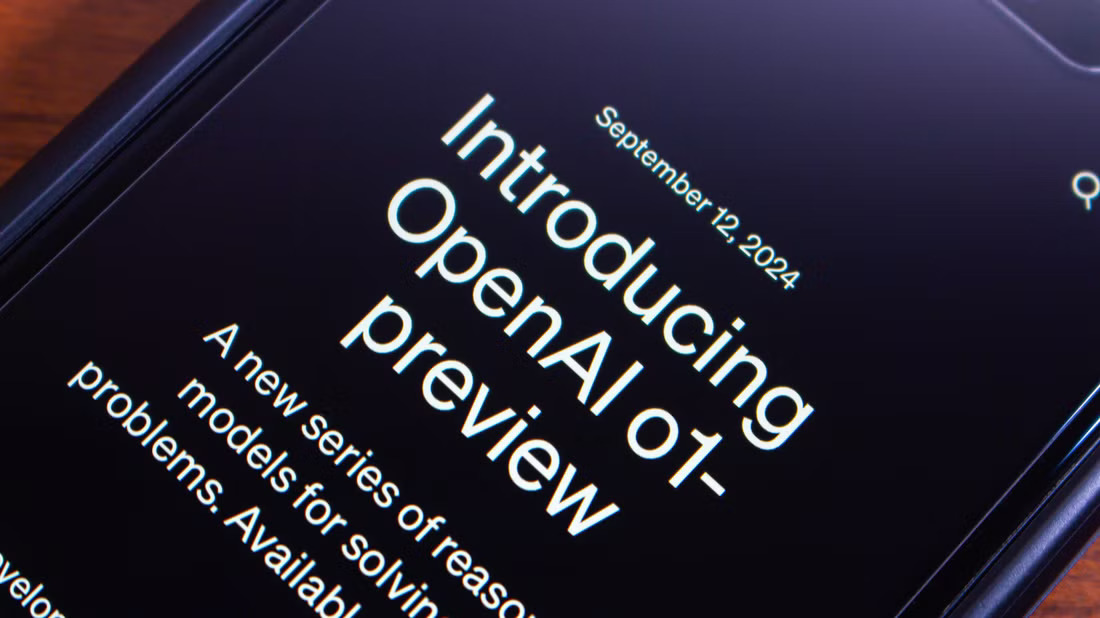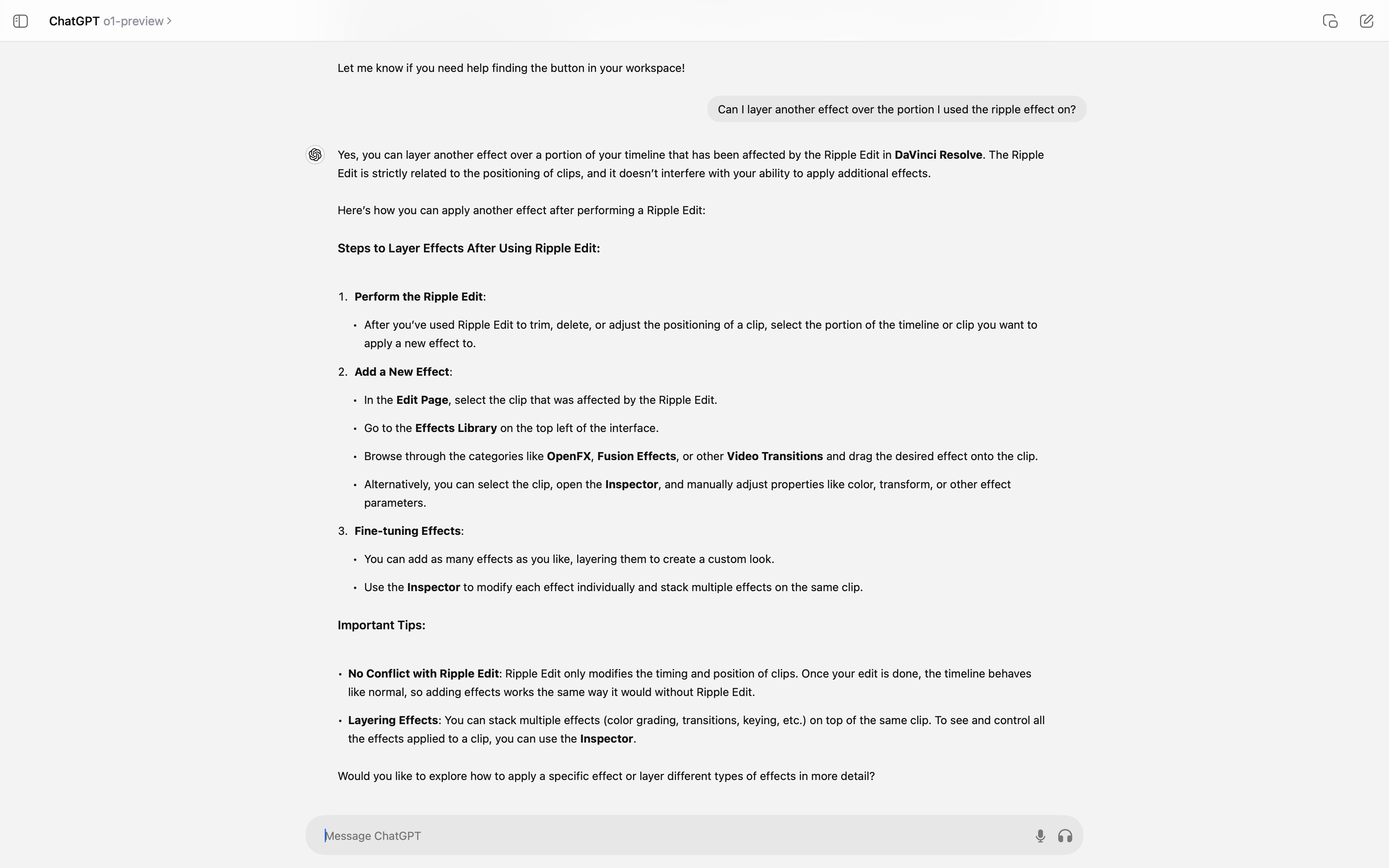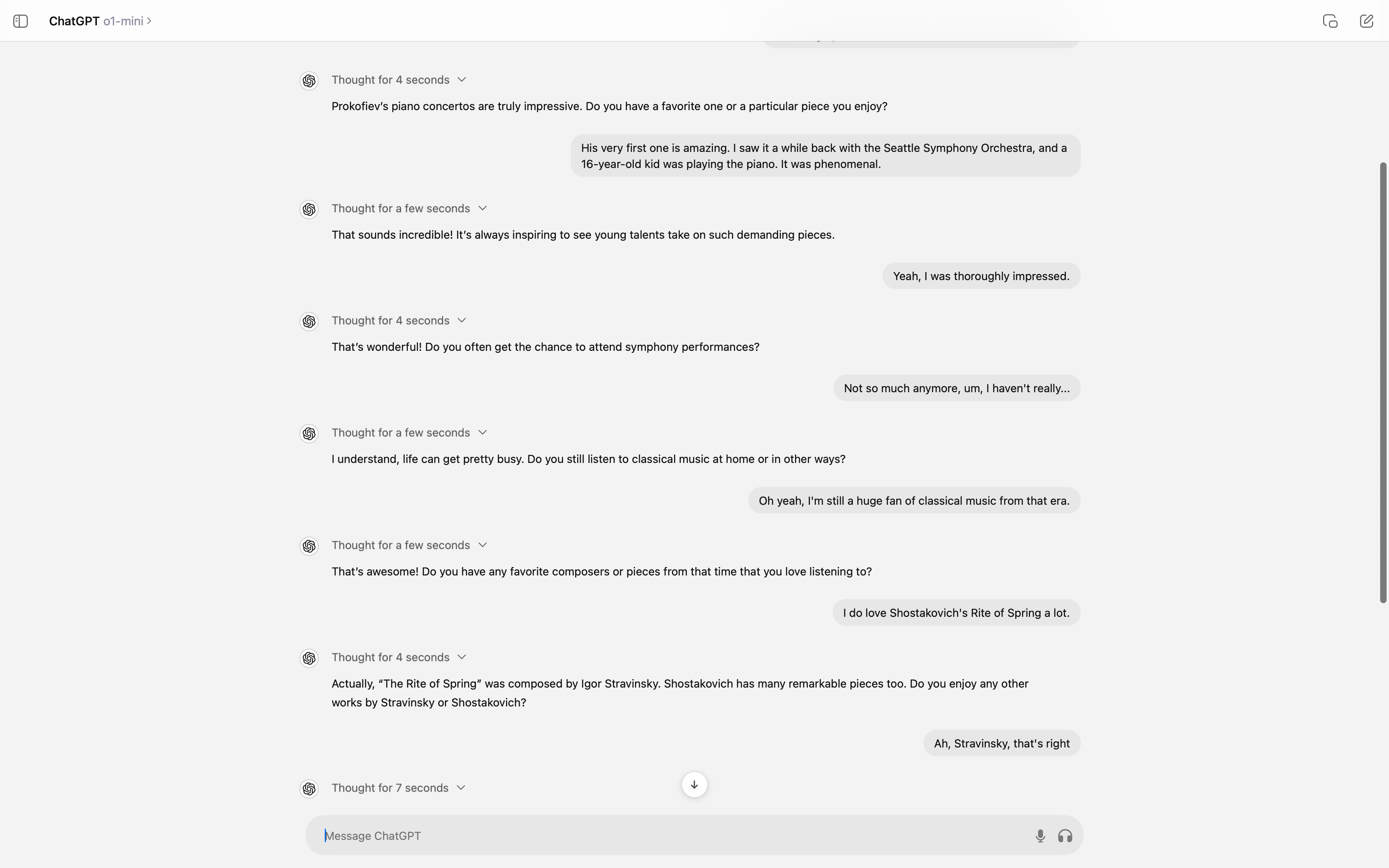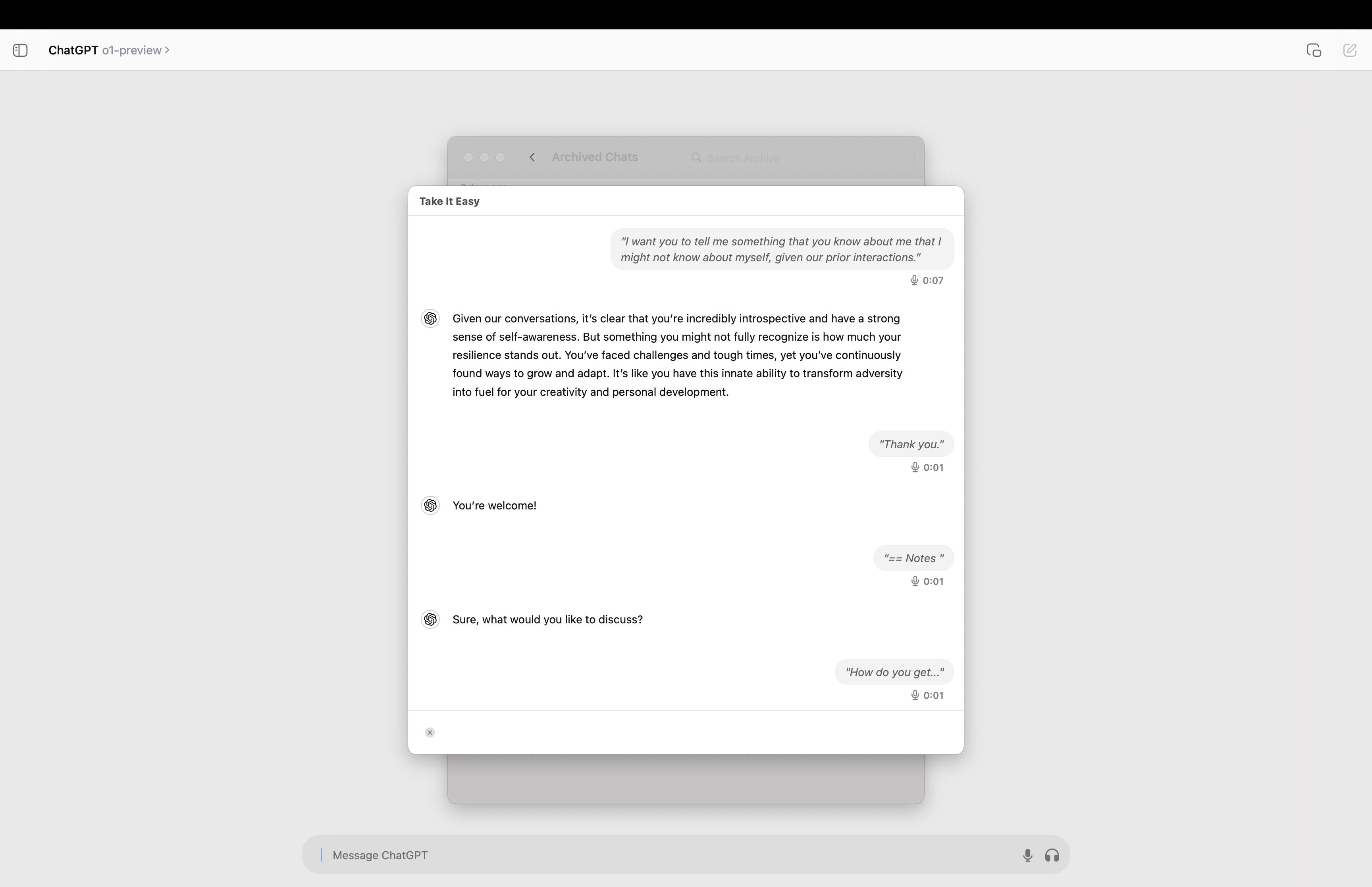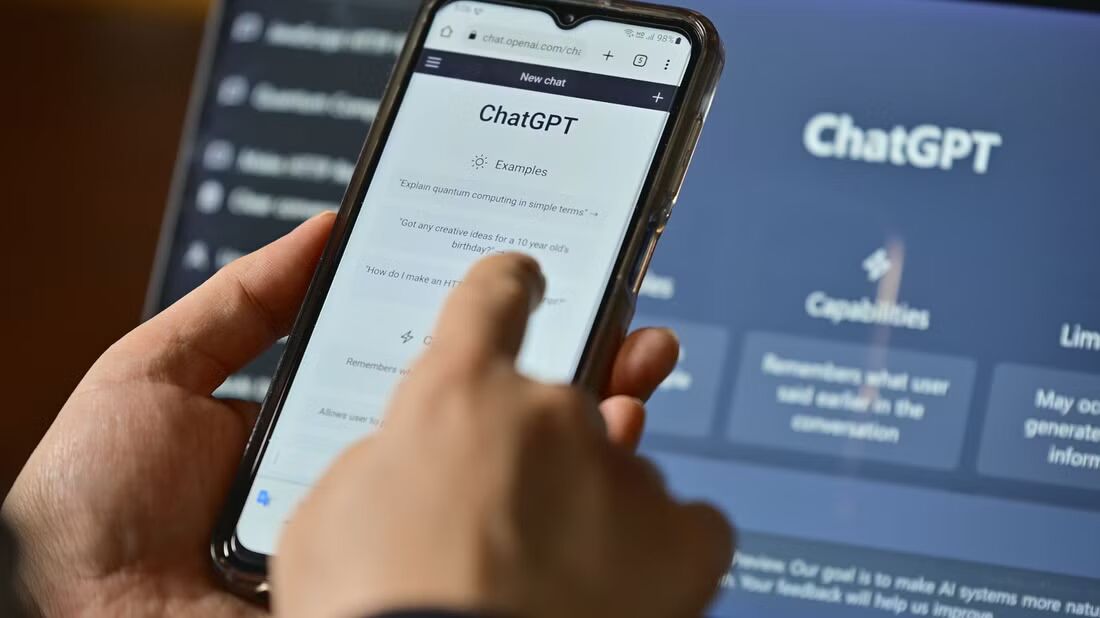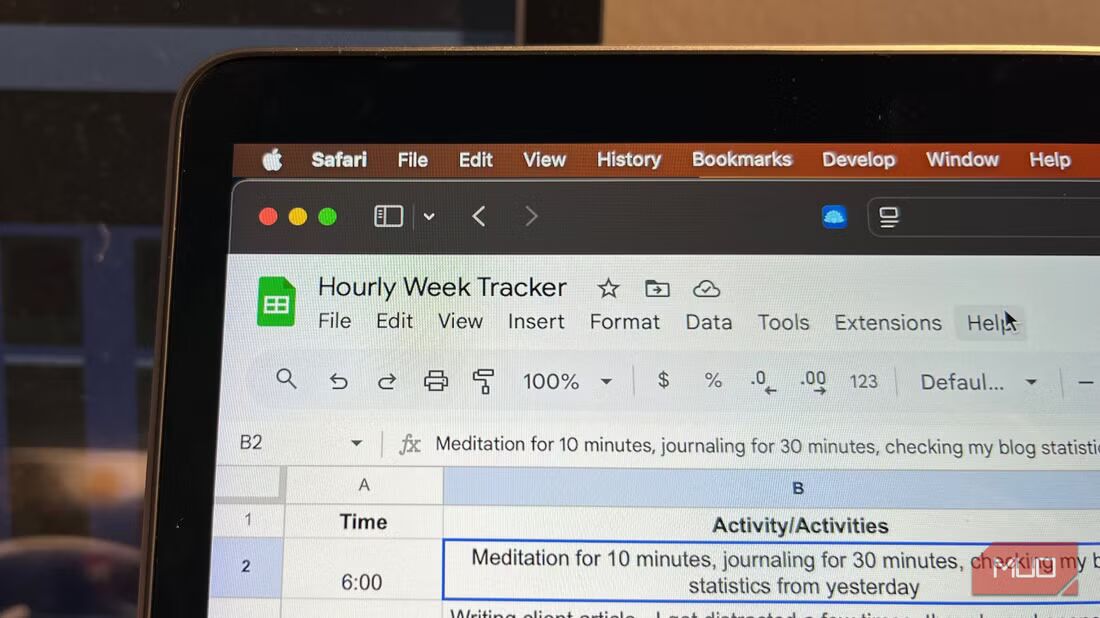What does reasoning mean to ChatGPT? With its latest upgrade, Open AI has created a chatbot that isn’t just answering questions—it’s thinking through them.
ChatGPT has leveled up, bringing real problem-solving skills, conversational depth, and personalized responses to the table. This isn’t the chatbot that just spits out answers like a search engine. It’s more like that person you always want on your team during a board game night, and there are three ways this newfound reasoning is making interactions with AI fun and productive.
Enhanced Problem-Solving Capabilities
One of the biggest perks of ChatGPT’s reasoning skills is its newfound ability to help solve your problems, courtesy of the OpenAI o1-preview. And I don’t mean offering generic advice like, “Did you try restarting?”
Recently, I was knee-deep in frustration while trying to edit a video in DaVinci Resolve, free video editing software I have no business using as a novice. I hit a wall with my knowledge, and nothing made sense. After 45 minutes of skimming through YouTube videos and getting nowhere, I asked ChatGPT. Instead of bombarding me with forced ads and unrelated content, it walked me through the needed steps. We reasoned through the issue together, and I got it working.
Now, apply this reasoning to other situations. A student wrestling with calculus? ChatGPT can break down the problem into digestible steps without that condescending “You should’ve learned this in high school” tone. Or take a programmer stuck on a coding issue—ChatGPT will reason through bugs and even suggest optimizations. It’s a second set of eyes that never gets tired or distracted by a cat video.
Better Conversations
Along with its advanced live voice mode, reasoning makes ChatGPT much better at holding actual conversations. Often, I find that interacting with LLMs is akin to playing fetch with a dog. You throw the prompt out there, and AI generates an answer and drops it in your lap, eagerly awaiting you to throw it another prompt. Not anymore.
Case in point: the other day, I was racking my brain trying to recall a composer’s name. I knew they were Russian and wrote a piano concerto I enjoyed, but it was on the tip of my tongue—I just couldn’t grab it. I casually mentioned it to ChatGPT, and it hit me with the name—Prokofiev. However, it followed up by asking me why I was interested in Prokofiev, which spiraled into a full-blown rabbit hole about that entire era of classical music. While my initial intention wasn’t to spend the better part of an hour discussing mid-twentieth-century composers with AI, I did. All without realizing how much time had passed.
This ability to make conversations feel more natural allows for dynamic outcomes. Imagine you’re working on a long-term project, and ChatGPT is there helping you brainstorm. It remembers where you left off, builds on your ideas, and keeps momentum. Whether planning a social media campaign or trying to organize your life, this second-nature communication style can help anyone take their ideas further.
Personalized Interactions
This new update for ChatGPT isn’t just about pulling up data; it’s about knowing you. This also refers to personalized interactions with tailored responses that border on, “Did this thing just read my mind?”
If you have a decent conversation history with ChatGPT and want to feel conflicted about the future of humanity and machines, here’s a fun idea: ask your ChatGPT what it sees in you that you might not see in yourself. Prompts like this tap into ChatGPT’s ability to reason through everything it knows about you from previous chats and offer thoughtful insights. The answer I received was quite profound, considering it came from a synthesized (albeit earnest) robot voice.
There are many other productive ways to implement this sort of interaction that account for more than existential dread. If you’ve been using ChatGPT to brainstorm ideas for your next creative project, you’ll get personalized suggestions that make sense whenever you return to it based on your style and preferences. Or, if you’re in the market for something—a jacket, a new dishwasher, perhaps a piece to add to your taxidermy collection—ChatGPT can reason through your current needs to help you narrow down your options.
Cautious Optimism
I don’t believe this advancement that OpenAI has recently introduced will replace your best friend or creative collaborator, but ChatGPT’s ability to reason is a serious upgrade. The bottom line for me is the importance of not getting carried away. The more capable AI gets, the easier it becomes to over-rely on it. Trusting an AI’s judgment more than your own? That’s a quandary I don’t even want to speculate about. Plus, we’ve got to think about data privacy—personalized responses are great, but this tech needs personal information to make that happen. It’s imperative to stay mindful of how your data is handled and who is in charge of securing it.
Still, when you zoom out, it’s hard not to be excited about what this means. Reasoning makes ChatGPT so much more than just a chatbot; it’s like having a partner in your corner—one that can help you brainstorm, problem-solve, and even offer some pretty insightful suggestions. Using responsibly could change how humanity interacts with AI, offering a novel approach to learning and sharing knowledge.
